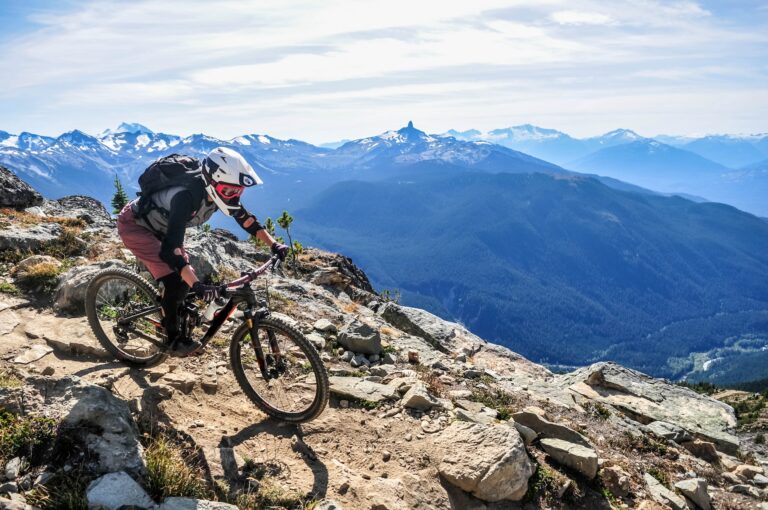Archives are a complex web of information and context.
Kim Lawson, an Indigenous archivist and seasoned librarian at the Indian Residential School History and Dialogue Centre (IRSHDC), spends a lot of time sifting through archives in search of information about Residential Schools.
Lawson, who is a member of the Heiltsuk Nation and an intergenerational Survivor, researches questions from Survivors and their families, researchers at UBC and beyond and other members of the general public.
Much of Lawson’s work at IRSHDC has supported Survivors and their families trying to access records in support of a claim for a class action lawsuit related to Day Schools in Canada, or for family members who are trying to find information about a relative who attended Residential School.
“That’s a really crucial type of request. It’s really one that we have in mind a lot,” said Lawson.
“One of the main reasons IRSHDC was created was to reduce barriers so that Survivors could find their own information instead of having to travel to the National Centre for Truth and Reconciliation in Manitoba or figure out which church archives had the record on their own. We’re here to help them navigate that complexity.”
“One of the main reasons IRSHDC was created was to reduce barriers so that Survivors could find their own information instead of having to travel to the National Centre for Truth and Reconciliation in Manitoba or figure out which church archives had the record on their own. We’re here to help them navigate that complexity.”
Kim Lawson
community liaison librarian, IRSHDC.
On average, the IRSHDC receives about 120 reference requests a year. While some requests are straightforward, about 50 are complex and require hours of research over many weeks to fulfil.
“Questions from the media, usually about photo copyright are often straightforward and easy to fulfil. Most of the substantive questions we receive are from Survivors,” said Lawson.
Searching for copies of records isn’t as easy as a “CTRL+F” search on a computer.
“A big part of the challenge is that for some of the schools, many records are very poorly described. It can mean looking at hundreds of pages at a time because there is very little information about what’s in a particular box of paper records or hundreds of pages on microfilm,” said Lawson.
It can also mean navigating big, complex archives like Library and Archives Canada, smaller community archives like Nanaimo Archives, or the archives of old shuttered newspapers with limited search information.
“When someone asks us for help, we often have a back-and-forth conversation to understand what the person is looking for. Most people will share partial information because they are working from memory or they’re seeking information for family,” said Lawson.
In some cases, Survivors and intergenerational Survivors are referred to the National Centre for Truth and Reconciliation (NCTR).
“A big part of our work in research is creating and nurturing relationships with Survivors, communities and other archivists and researchers,” said Clea Hargreaves, a research strategist at IRSHDC. “As so much of the information is still not public, and therefore only available on the back-end, a good deal of our work focuses on walking alongside requestors to make introductions and assisting Survivors and families with filling out third-party access forms, like at the NCTR, to gain access to the records they might be looking for. We also have numerous information-sharing agreements in place to work towards offering greater access to records across the board.”
In other cases where little information is located or found, the reference team provides context as to why that is the case.
“Sometimes the records someone is looking for aren’t kept with those of the particular Residential School. Operational records will be in government or church archives, but records of the school before being built might have been sitting in the superintendent’s office and may have been lost completely,” said Lawson.
Archives through a decolonial lens
The IRSHDC opened on Apr. 9, 2018 to provide Residential School Survivors and their families and communities access to records gathered by the Truth and Reconciliation Commission of Canada (TRC).
As an affiliate site to the National Centre for Truth and Reconciliation in Winnipeg, the collection at IRSHDC holds about 3,400 publicly available records about the Indian Residential School System in Canada.
The resources of IRSHDC are set up differently than other archives.
“IRSHDC’s collection is built through a decolonial lens by bringing together library, archive and museum resources together, and is intended to disrupt the common understanding that documents are neutral or exactly as presented,” said Naomi Lloyd, IRSHDC’s senior systems metadata specialist.
“In other systems, you need to know a lot about the colonial structure of Residential Schools to get records for each school: which government agency funded or ran the schools, which church ran the schools and how their names changed over time,” explained Lawson.
Instead, IRSHDC set up their collection to mirror how Survivors and community members would have interacted with the Residential School system.
“Right from the beginning, IRSHDC was focused on answering questions about particular schools, rather than focusing on the institutions that created the records,” said Lawson. “By placing the schools at the centre of how information is organized, the collections at IRSHDC are much closer to the Survivors’ experience. It decentres colonial agents and makes Survivors and their school experiences in their communities much more visible.”
This is reflected in the interactive digital wall in the gallery space. The wall includes a thematic nodes feature, which is a non-linear and non-hierarchical feature that allows visitors to view, browse and learn about Residential Schools in a way that honours Indigenous ways of knowing. Each node includes a different topic related to the historical and ongoing oppression of Indigenous people because of Canadian policies.

Centring Survivors is also key to the physical space of the IRSHDC. The Elders Lounge on the top floor is a space for people to search records independently or alongside their family. It also has traditional medicine for those who would like to smudge, as does the gallery. In the gallery, people can research privately in individual kiosks. An area just outside the gallery gives them time and space if they need it due to the sensitive material of Residential Schools.
In partnership with the Indian Residential School Survivor Society, IRSHDC hosts wellness drop-ins on Wednesdays for Indigenous students, staff and faculty as well as community members who would like to access cultural wellness supports.
Prioritizing the voices of Survivors still leaves room for accountability of the church and governmental organizations that ran Residential Schools.
“The government agencies that ran the schools are all still there. They’re not in any way invisible. They’re just not the door you have to walk through to find anything,” said Lawson.
Serving Survivors
The driving purpose of the work at IRSHDC is to serve Survivors. Part of that work involves supporting Indigenous people, communities, nations or organizations in recording their own oral testimonies or truths through the centre’s Oral Testimony Program (OTP).
“The program was driven and initiated by communities, before the Centre opened. There were consultations with communities in British Columbia about what the IRSHDC would look like and what would be incorporated within that,” said David McAtackney, OTP co-lead and research manager at IRSHDC.
“The Oral Testimony Program was created to record, preserve and make accessible for future use the recordings and testimonies of those who attended and were the most directly affected: Survivors of Residential Schools and other institutions of colonialism,” said McAtackney.
“The Oral Testimony Program was created to record, preserve and make accessible for future use the recordings and testimonies of those who attended and were the most directly affected: Survivors of Residential Schools and other institutions of colonialism.”
David McAtackney
research manager and OTP co-lead, irshdc
Indigenous communities can borrow equipment to do their own recordings, or involve IRSHDC researchers. Recording is one of the very last steps in the OTP, with a considerable portion of the work focused on properly building relationships first.
“Heading into communities to immediately record is extractive and doesn’t take into consideration how communities want to participate in OTP,” said Kristin Kozar, executive director of the IRSHDC and a proud member of the Hwlitsum First Nation, with familial ties to the Musqueam Indian Band, Penelakut Tribe and Lummi Nation. “We aim to support and uplift communities and a part of that is making sure they lead the way and are comfortable with us before doing any type of recording.”
Autonomy over records and any decisions about recordings within the OTP are entirely led by the Indigenous communities and individuals Kozar and McAtackney work with it on.
“As we were developing the Oral Testimony Program, we worked really hard with the UBC ethics board to ensure we are able to centre Indigenous people, communities and Nations when doing oral testimonies,” said Kozar. “We were not willing to go forward with ethics unless we were able to have Indigenous communities lead this type of work.”
The ethics application, which was approved in April 2023 after a two-and-a-half-year process, ensured that communities could decide how they did the recordings, what was done with their recordings, how they were stored and with whom the recordings would be shared—if anyone at all.
So far, the IRSHDC has done recordings with 11 communities through four different project partnerships. Kozar and McAtackney frequently travel to Indigenous communities and gatherings around B.C. to support people who engage with the OTP.
“With the Oral Testimony Program, communities decide how the information is stored and who has or doesn’t have access to the records,” said Kozar. “This is how you can be in service to Survivors, by letting the community guide and lead you.”
For Kozar, collaborating and partnering with Indigenous communities at UBC and beyond is foundational to her ongoing work at the IRSHDC to ensure Indigenous data sovereignty and advance truth and reconciliation.
“I am deeply committed to honouring Indigenous ways of knowing and continuing the heart work of supporting Survivors and their families,” said Kozar.
On Apr. 15, 2024, the Indian Residential School History and Dialogue Centre is hosting an open house from 2-5 p.m. Over light snacks and refreshments, Kristin Kozar, executive director of the IRSHDC, will be speaking about the Centre, its programs, research initiatives and answering questions related to the work at the Centre.
Written by Amei-lee Laboucan, communications manager at IRSHDC, in partnership with UBC Media Relations.








